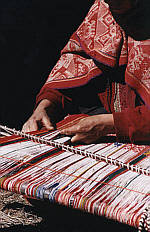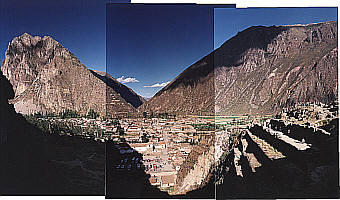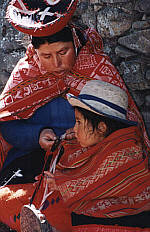
The men of Huilloc sometimes work as porters for the trekking companies. The women are mostly weavers.
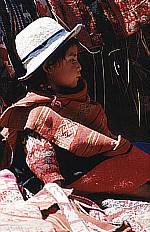
It was sunny and about 75 degrees when we arrived, but most of the locals were wearing woolen shawls and hats.
Hiram Bingham, "Lost City of the Incas, the story of Machu Pichu and its builders," Ediciones Turisticas S.A., 1997.
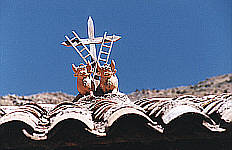
Many people have these decorations on their roof. The ceramic bulls are about 4" tall.
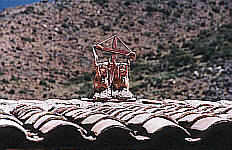
The bulls, the cross, and the ladders symbolize different things, and are installed at different times.

There is a school in the village, where the children are taught in Spanish as well as the native language, Quechua.
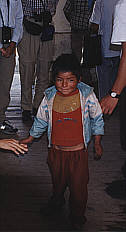
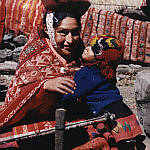
The children who are too young to attend school are always near their mother. |
|||
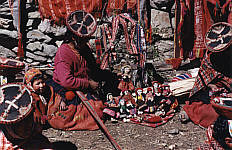
The handicrafts are usually sold to wholesalers, but for our visit, many were put on display and quite a few were sold.
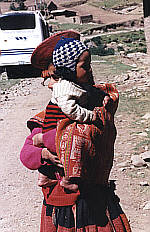
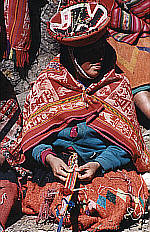
People here wear different hats than in Urcos.
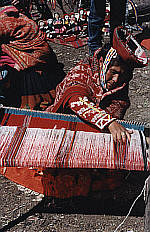
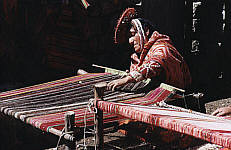
The weavers all sit directly on the ground, in the courtyard outside their houses, which are mostly adobe huts with dirt floors. There are often pigs wandering around. There are also a pack of llamas, a few dogs, and many guinea pigs.
